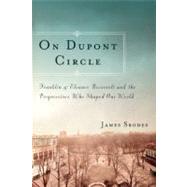
What is included with this book?
| Preface | p. 1 |
| The Characters at the Beginning | p. 7 |
| Chronology of Important Events | p. 11 |
| Dinner at the House of Truth | p. 17 |
| Avoiding an Unavoidable War | p. 33 |
| The Dupont Circle Set at War | p. 49 |
| Fighting for Peace in Paris | p. 63 |
| Compromises and Betrayals | p. 75 |
| Victory without Triumph | p. 91 |
| Progressivism in Retreat | p. 101 |
| Adrift in Smoke-Filled Rooms | p. 115 |
| Dupont Circle Diplomats | p. 131 |
| The Best Laid Plans | p. 151 |
| Rethinking Progressivism | p. 165 |
| Who but Hoover? | p. 179 |
| The Making of a President | p. 195 |
| Messy Foreign Affairs | p. 211 |
| War Clouds on the Horizon | p. 227 |
| Looking Over the Horizon | p. 245 |
| Success Threatened by Scandal | p. 261 |
| Conclusions: The Legacy of the Dupont Circle Set | p. 281 |
| Notes | p. 289 |
| Acknowledgments | p. 315 |
| Index | p. 317 |
| Table of Contents provided by Ingram. All Rights Reserved. |
The New copy of this book will include any supplemental materials advertised. Please check the title of the book to determine if it should include any access cards, study guides, lab manuals, CDs, etc.
The Used, Rental and eBook copies of this book are not guaranteed to include any supplemental materials. Typically, only the book itself is included. This is true even if the title states it includes any access cards, study guides, lab manuals, CDs, etc.